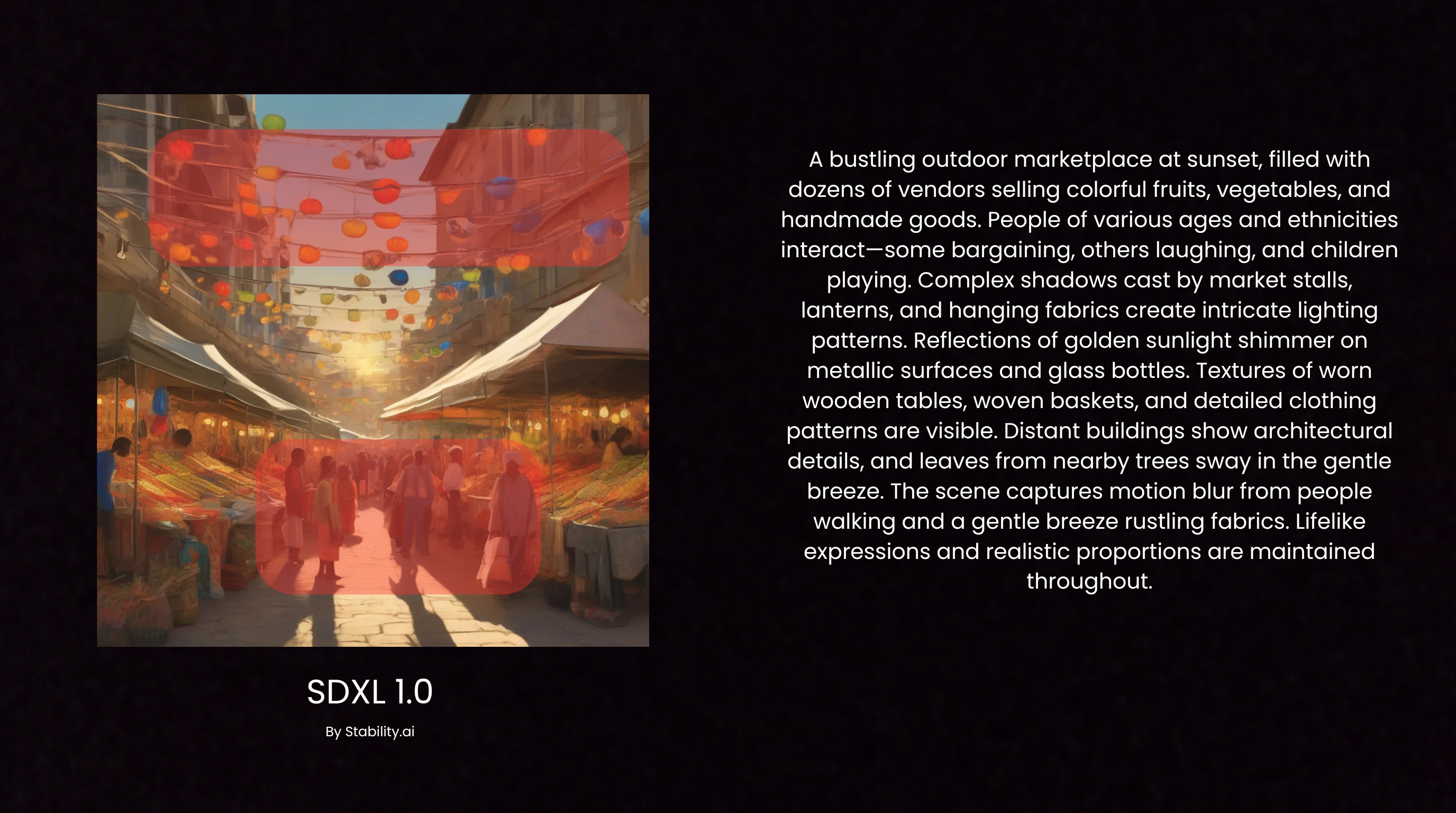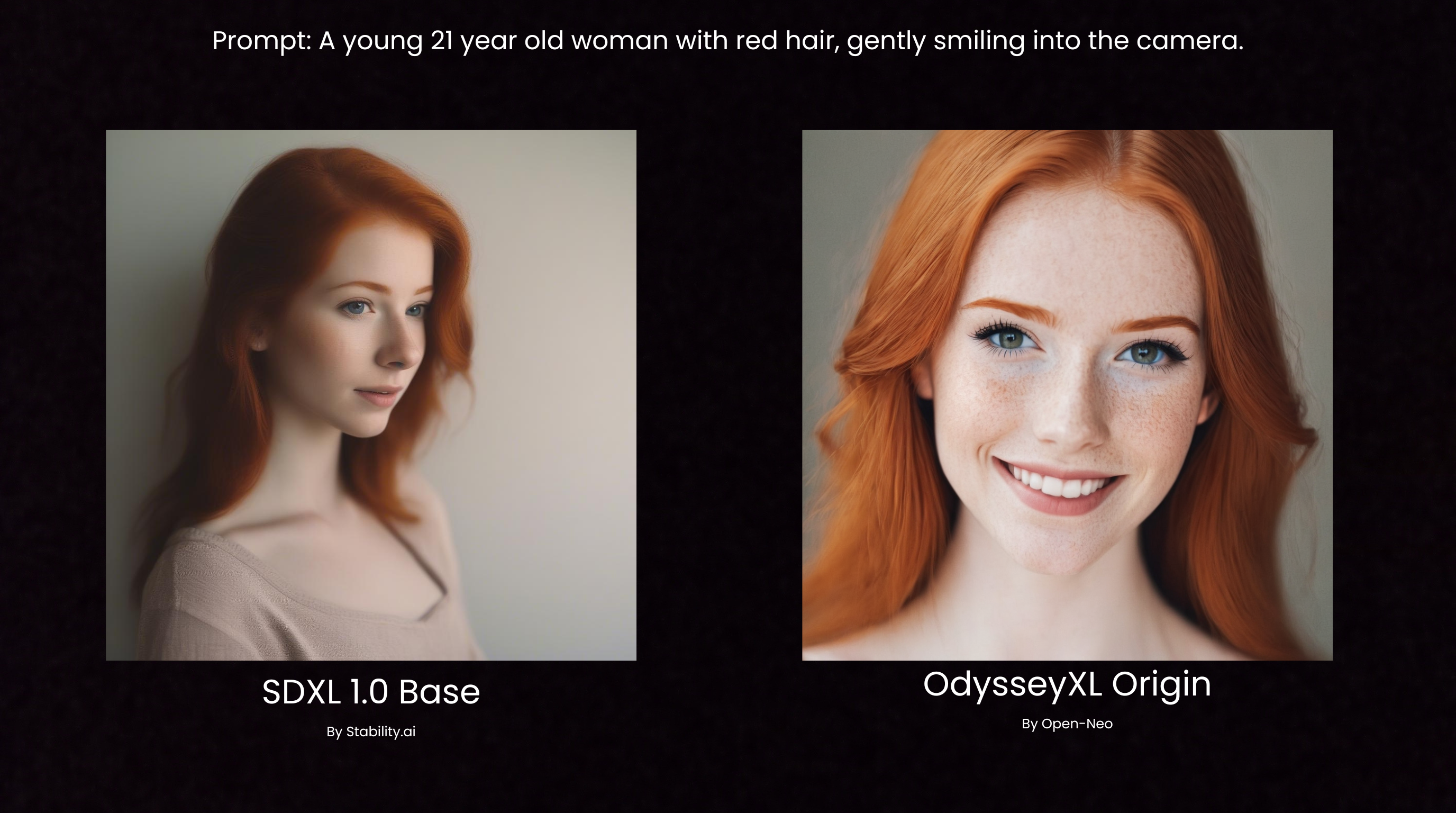Advancements in Realistic Image Generation
Published:
Advancements in Realistic Image Generation in OdysseyXL

1) Introduction to Diffusion Models:
Image-generating models are a significant sector of the industry today, and approximately 57% of the content is generated using artificial intelligence (Constantino, 2024). The images are created using a process known as Diffusion. Diffusion models are now the standard technique for AI image generation. The models operate by learning to undo a process in which noise is added to images progressively. Starting from random noise, the model successively removes this noise in accordance with patterns learned, ultimately producing coherent, detailed images. The approach has proved to be quite powerful, powering mainstream services like DALL-E, Midjourney, and Stable Diffusion (OdysseyXL’s foundation). By conditioning this denoising process on text prompts, these models are able to produce very specific visual information that corresponds to user requests, a tremendous improvement over previous generative techniques.
2) Realistic Image-Generation Issues:

Despite significant strength, diffusion models also fall short of producing hyper-realistic images with detailed scenes containing many objects. The reason for this is the inability to sustain spatial consistency and coherence, particularly for modeling complex scenes like occlusion, location, and viewpoint relationships. City streets and forests are prime examples of such scenes where there is an enormous need for capturing spatial dynamics that most older diffusion models today cannot provide (as seen above). Furthermore, the generation of subtle details—such as detailed textures, accurate reflections, and appropriate shadows—may be difficult, resulting in visual artifacts or loss of photorealism.
Furthermore, computational expenses for creating high-quality images with numerous objects tend to have trade-offs between efficiency and quality. The intensive memory and processing could potentially prevent real-time or large-size image generation. Approaches such as DreamBooth fine-tuning that aim to promote consistency and adhering to style may be confronted by the challenges of mode collapse, inconsistency in object representation, and struggling with complicated lighting. Alleviating these issues continues to be a significant aim in the further enhancement of realism in diffusion-based image synthesis.
3) Techniques for Enhanced Realism:
To enhance the reality of diffusion models, certain advanced techniques can be employed, one of which is DreamBooth. DreamBooth is a fine-tuning technique allowing diffusion models to produce highly realistic images of specific subjects, environments, or styles by fine-tuning from an approved dataset. This method helps a model better maintain unique visual characteristics and fine details, such as facial features, texture, and lighting effects, leading to more photorealistic outputs. For the case of OdysseyXL, we use a images of different enviourments and landscapes to help it generate specific details in a wide landscape.
4) Comparison: OdysseyXL vs SDXL:
OdysseyXL, a DreamBooth fine-tuned SDXL model, presents a unique case study in style consistency and detail retention in image generation. With the application of DreamBooth fine-tuning, OdysseyXL has been able to capture subtle stylistic elements and realistic textures while achieving consistency in generated images. The approach allows the model to highlight key points of realism, such as facial features, clothing textures, and environmental details, to produce outputs that are not only highly consistent but also photorealistic. Below we can see an example by comparing SDXL and OdysseyXL 1.0 (OdysseyXL-Origin):

5) Conclusion:
While there are more advanced models in the open-source realm, this demonstrates how a model can be significantly enhanced with specific adjustments, generating far more advanced and realistic outputs. It illustrates the possibility of incremental refinement and the advantage of tailored approaches in furthering the abilities of what diffusion models are capable of
6) Resources
Constantino, T. (2024, September 2). Is AI quietly killing itself – and the Internet? Forbes Australia. https://www.forbes.com.au/news/innovation/is-ai-quietly-killing-itself-and-the-internet/
